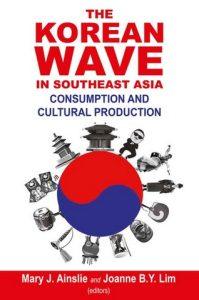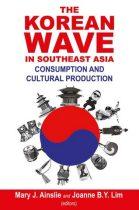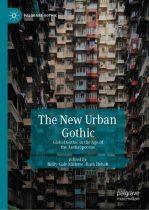
 This article discusses the construction of K-vampires in popular Korean television dramas, focusing on three series that feature central vampire characters: Vampire Prosecutor, a crime procedural running for two seasons in 2011 and 2012, its spin-off, Vampire Detective (2016) and a medical drama Blood (2015). The main protagonists in these series are all simultaneously vampires and members of professions designed to help humans: a lawyer, a detective and a surgeon. Constructed as parallel to humans, these vampires are portrayed as free-willed individuals striving to overcome their condition. The article argues that the humanisation of K-vampires can be seen as a hybridisation strategy blending the characterisation of the ‘reluctant’ vampires known from Western post-millennial fiction with some features of the Korean kumiho, a supernatural shape-shifting fox creature that desires to become human. The article also proposes to read the series in the Neo-Confucian context, particularly in relation to its social and gender norms. It argues that while the male vampires in the series function chiefly to deliver critique of Korean neoliberal society, with the heroes modelled on the virtuous seonbi scholars and the villains described as sociopathic capitalists, the female vampires are mostly portrayed as tragic heroines, vilified for their moral transgressions and redeemed through selfless sacrifice.
This article discusses the construction of K-vampires in popular Korean television dramas, focusing on three series that feature central vampire characters: Vampire Prosecutor, a crime procedural running for two seasons in 2011 and 2012, its spin-off, Vampire Detective (2016) and a medical drama Blood (2015). The main protagonists in these series are all simultaneously vampires and members of professions designed to help humans: a lawyer, a detective and a surgeon. Constructed as parallel to humans, these vampires are portrayed as free-willed individuals striving to overcome their condition. The article argues that the humanisation of K-vampires can be seen as a hybridisation strategy blending the characterisation of the ‘reluctant’ vampires known from Western post-millennial fiction with some features of the Korean kumiho, a supernatural shape-shifting fox creature that desires to become human. The article also proposes to read the series in the Neo-Confucian context, particularly in relation to its social and gender norms. It argues that while the male vampires in the series function chiefly to deliver critique of Korean neoliberal society, with the heroes modelled on the virtuous seonbi scholars and the villains described as sociopathic capitalists, the female vampires are mostly portrayed as tragic heroines, vilified for their moral transgressions and redeemed through selfless sacrifice.
 This paper examines Korean influences on contemporary Thai cinema in terms of genre development, narrative structure and co-production. It will discuss the emergence of the strong “masculinised” heroine in Thai comedies, re-configuration of the horror, comedy and action thriller genres, changes in the narrative strategies of 21st century Thai films, and the results of creative co-production between Thailand and Korea.
This paper examines Korean influences on contemporary Thai cinema in terms of genre development, narrative structure and co-production. It will discuss the emergence of the strong “masculinised” heroine in Thai comedies, re-configuration of the horror, comedy and action thriller genres, changes in the narrative strategies of 21st century Thai films, and the results of creative co-production between Thailand and Korea.


 The chapter looks at three distinct themes in what we could loosely term Asian ‘apartment horror’ films that are characteristic of the specific sociocultural contexts and urban cultural economies they represent: (1) the portrayal of the contiguous community where ghosts co-habit the space alongside the living; (2) the alienating character of modern urban communal lifestyles, where ghosts are more visible than the living, and the biggest fear of both groups is that of loneliness and isolation; and finally (3) the placement of the ghost as a representation of a failed dream of economic success that continues to drive the migration of Asian rural populations to the cities.
The chapter looks at three distinct themes in what we could loosely term Asian ‘apartment horror’ films that are characteristic of the specific sociocultural contexts and urban cultural economies they represent: (1) the portrayal of the contiguous community where ghosts co-habit the space alongside the living; (2) the alienating character of modern urban communal lifestyles, where ghosts are more visible than the living, and the biggest fear of both groups is that of loneliness and isolation; and finally (3) the placement of the ghost as a representation of a failed dream of economic success that continues to drive the migration of Asian rural populations to the cities.
 This article discusses the construction of K-vampires in popular Korean television dramas, focusing on three series that feature central vampire characters: Vampire Prosecutor, a crime procedural running for two seasons in 2011 and 2012, its spin-off, Vampire Detective (2016) and a medical drama Blood (2015). The main protagonists in these series are all simultaneously vampires and members of professions designed to help humans: a lawyer, a detective and a surgeon. Constructed as parallel to humans, these vampires are portrayed as free-willed individuals striving to overcome their condition. The article argues that the humanisation of K-vampires can be seen as a hybridisation strategy blending the characterisation of the ‘reluctant’ vampires known from Western post-millennial fiction with some features of the Korean kumiho, a supernatural shape-shifting fox creature that desires to become human. The article also proposes to read the series in the Neo-Confucian context, particularly in relation to its social and gender norms. It argues that while the male vampires in the series function chiefly to deliver critique of Korean neoliberal society, with the heroes modelled on the virtuous seonbi scholars and the villains described as sociopathic capitalists, the female vampires are mostly portrayed as tragic heroines, vilified for their moral transgressions and redeemed through selfless sacrifice.
This article discusses the construction of K-vampires in popular Korean television dramas, focusing on three series that feature central vampire characters: Vampire Prosecutor, a crime procedural running for two seasons in 2011 and 2012, its spin-off, Vampire Detective (2016) and a medical drama Blood (2015). The main protagonists in these series are all simultaneously vampires and members of professions designed to help humans: a lawyer, a detective and a surgeon. Constructed as parallel to humans, these vampires are portrayed as free-willed individuals striving to overcome their condition. The article argues that the humanisation of K-vampires can be seen as a hybridisation strategy blending the characterisation of the ‘reluctant’ vampires known from Western post-millennial fiction with some features of the Korean kumiho, a supernatural shape-shifting fox creature that desires to become human. The article also proposes to read the series in the Neo-Confucian context, particularly in relation to its social and gender norms. It argues that while the male vampires in the series function chiefly to deliver critique of Korean neoliberal society, with the heroes modelled on the virtuous seonbi scholars and the villains described as sociopathic capitalists, the female vampires are mostly portrayed as tragic heroines, vilified for their moral transgressions and redeemed through selfless sacrifice.